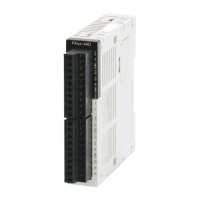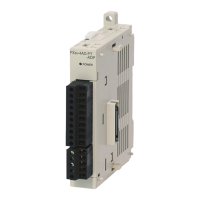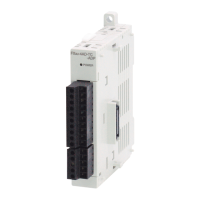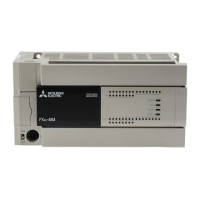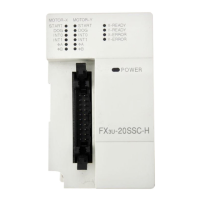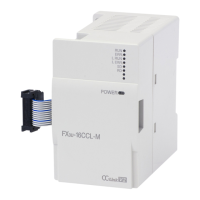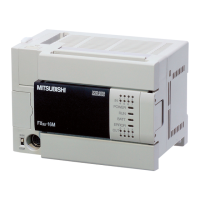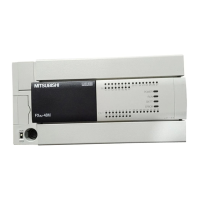D-75
FX Series PLC User's Manual - Data Communication Edition
Computer Link
7 Commands
7.13 On-demand Function
A
Common Items
B
N:N Network
C
Parallel Link
D
Computer Link
E
Inverter
Communication
F
Non-Protocol
Communication
(RS/RS2 Instruction)
G
Non-Protocol
Communication
(FX
2N
-232IF)
H
Programming
Communication
I
Remote
Maintenance
Apx.
Discontinued
models
2. When ch2 is used in FX3G, FX3U and FX3UC PLCs
Important points
• The on-demand send processing signal (M8127 or M8427) turns ON when the PLC gives a request to
send data to the computer, and turns OFF when sending of the specified data is completed. Use this signal
for interlock to prevent giving two or more on-demand requests at the same time.
• While the on-demand send processing signal is ON, the PLC cannot receive commands sent from the
computer.
• Amount of on-demand data and number of data registers used for sending according to the unit
specification (word or byte)
When the specified unit is a word:
The amount of on-demand data is equivalent to the number of data registers to be sent.
When the specified unit is a byte:
Two on-demand data units use one data register for sending.
Example: When the amount of on-demand data is "5", the number of data registers for sending is "3".
Device Name Description
M8427
On-demand send
processing
Remains ON while the on-demand function is being executed.
ON: On-demand data is being sent.
OFF: Sending of on-demand data is completed.
M8428 On-demand error flag
Turns ON when an error is included in a specified value to be sent in the on-
demand function.
ON: Error is included.
OFF: Error is not included.
M8429
On-demand byte/word
changeover
Specifies the unit (byte or word) of data handled in the on-demand function.
ON: Unit = Byte (8-bit)
OFF: Unit = Word (16-bit)
D8427
On-demand head device
number specification
Sets the head data register device number containing the data to be sent
using the on-demand function in a sequence program.
D8428
On-demand data quantity
specification
Sets the amount of data to be sent using the on-demand function in a
sequence program.

